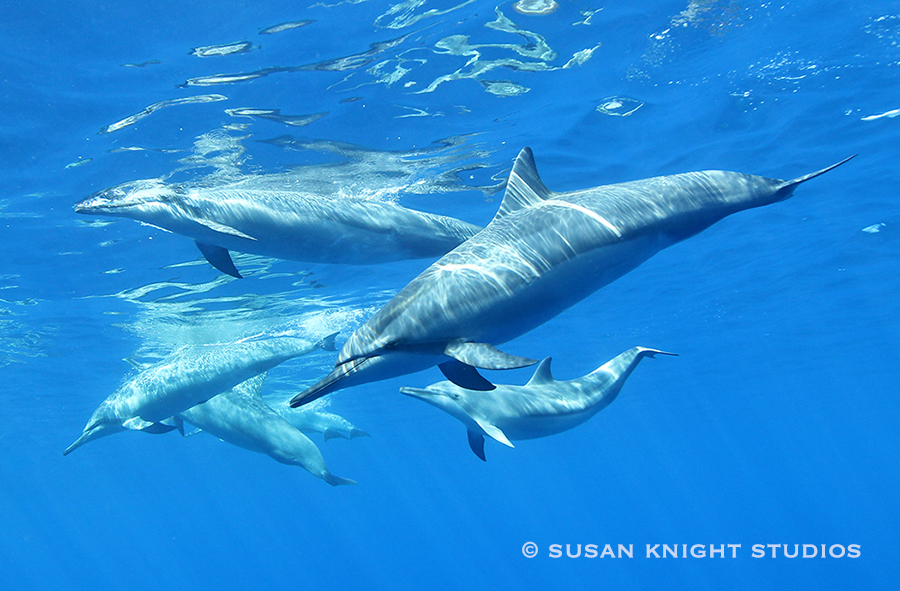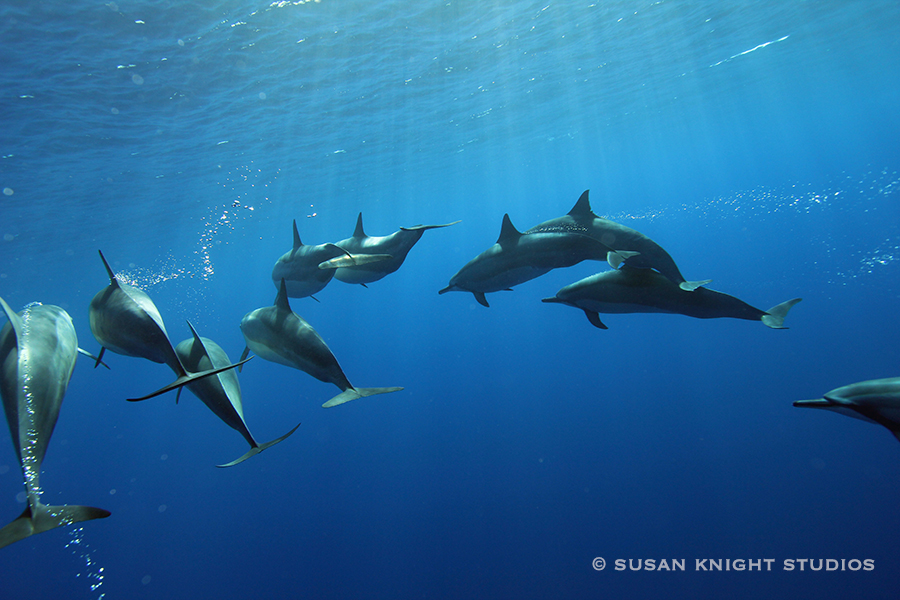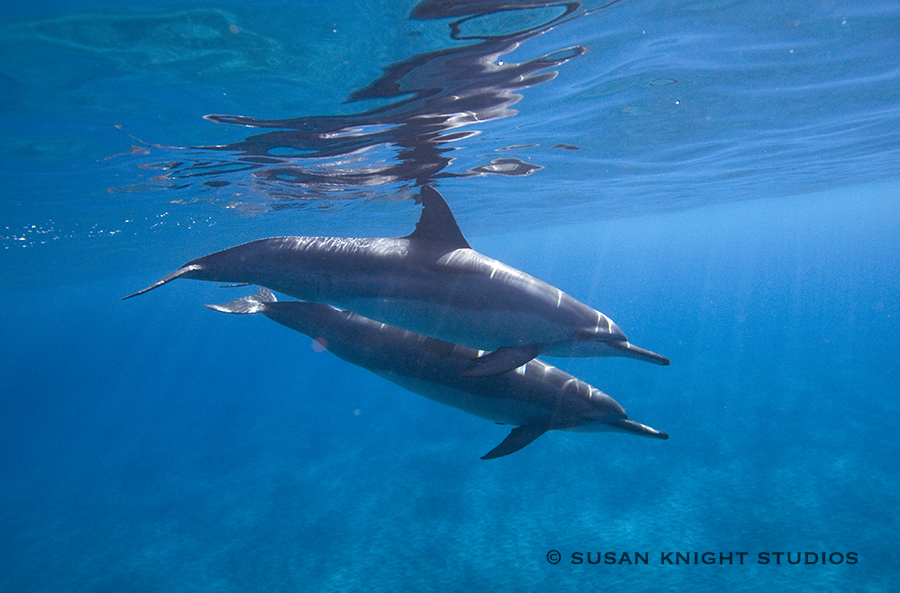By Susan Knight
Welcome to the studio of the great outdoors. Today I’d like to share some cool info about Hawaiian spinner dolphins. Many people feel a connection with these curious, fascinating and majestic creatures and seek them out. Happily, there are now places to safely and respectfully swim with wild dolphins, rather than participating in a captive dolphin experience. The images here are of Hawaiian spinner dolphins from Kona, Hawaii, where you may also hear them called by their Hawaiian name, nai’a. They belong in the family Delphinidae, which also includes orcas and pilot whales. Their scientific name is Stenella longirostris; the second word refers to the especially long, slender rostrum or snout.
Many of us think of dolphins as playful, joyful and fun. They seem to have a permanent smile and are incredible to watch jump and play in the water. Visitors may be lucky enough to see the spinner dolphins act out the behavior for which they are named, as the animals are known for flinging themselves out of the water and spinning in circles before splashing back into the sea. Theories on the purpose of this behavior include communication methods, ways to dislodge attached remoras — or simply to play. And, as often heard on tour boats, perhaps they do it just because they can. Spinners have powerful tails that allow them to jettison themselves far out of the water.
Spinner dolphins spend their nights hunting in deep water, mostly for fish and squid, then come in close to shore to rest and socialize during the day. This is when people have the opportunity to swim with and observe them. The pod swims together as one, often surfacing together to breathe through their blowholes. You can sometimes hear their collective breath at the surface as they quickly exhale and inhale fresh air into their lungs. One can also often hear the whistling and clicking sounds underwater as they “sing” or echolocate, which is when dolphins send out and receive back sound waves as a way to locate prey and navigate their surroundings.
Pods can range from a few dolphins to super-pods of hundreds of animals. Spinners sometimes swim with other dolphin species and even humpback whales. Certain spinner pods tend to return to same area or bay each day, allowing naturalists who swim with them consistently to recognize individuals by markings. One frequent marking is a small, round scar from one of their common predators, the cookie-cutter shark. Other markings include indentations in dorsal fins, as well as scratches and bites from sexual activity (they are not shy).
You’ll also notice that the dolphins are darker on top and lighter on the bottom. This marking, known as countershading, helps camouflage and protect the animals from predators, and also helps them approach their prey. When one is above the animal looking down, the dark top of the dolphin blends in with the bottom of the sea; when below, looking up into the light sky and sun, the lighter silhouette blends in and makes the dolphins difficult to see.
Another unique trait of spinners is in the way they sleep, which amounts largely to frequent napping for short time periods while they slowly swim in circles and rest. Since they must always be watchful for predators, only one half of their brain sleeps while the other is active and alert. They’ve even been observed with only one eye closed at a time. After one half of their brain is rested, the animals will switch and the other side of their brain goes into sleep mode. This seems to be a very successful strategy and is yet another interesting characteristic of these beautiful animals.
If you do visit the spinner dolphins of Hawaii, please be mindful that they need to rest during the day so that they have energy to hunt and be safe from their predators. Enjoy and limit your time in the water with them; do not chase or harass. They will come to you. Patience will provide for some unforgettable memories.
Susan Knight is a dive instructor, tour guide and marine biologist who has spent the last 20 years traveling, teaching and writing about the oceans in the Pacific Northwest, Hawaii and the Caribbean. She has transitioned mostly to freediving and has become known for her work with large marine animals such as whales, dolphins, sharks and elusive Mermaids. Her studio has always been anywhere and everywhere in the great outdoors. You can see her work and video projects at www.susanknightstudios.com and on Facebook.




